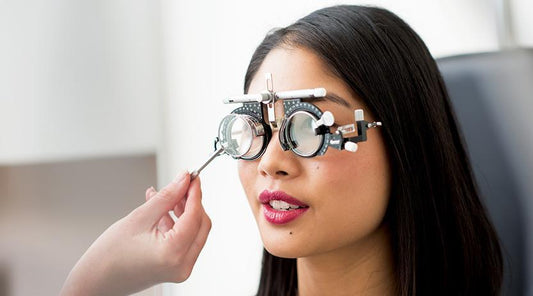Meet the equipment behind your eye test

Most of us have had an eye test – which means most of us have probably wondered what all that intricate-looking equipment does.
We’ll take you through what’s what, so you can see exactly what’s involved. And why each piece of equipment is so essential for checking in on your vision.
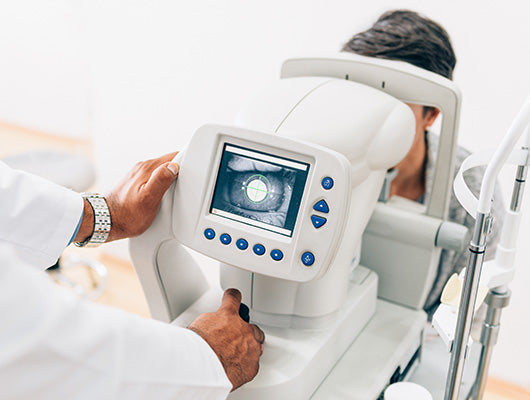
Auto-refractor
This measures your eye’s ability to focus and helps determine your prescription – but unlike a phoropter, an auto-refractor adjusts automatically. This means there is no need to look at a letter chart or give feedback on how clear your vision is. It measures refractive error by seeing how light is changed as it enters the eye and lands on your retina.
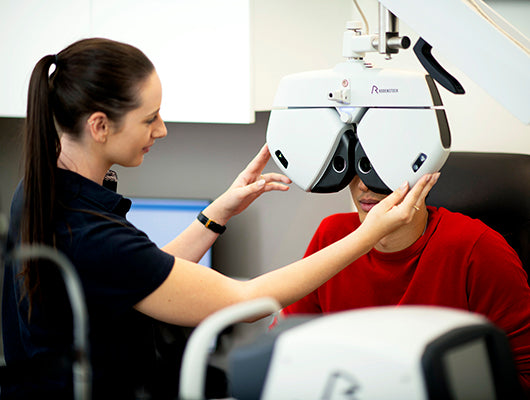
Phoropter (Refractor head)
Your optometrist will use a phoropter if they think you need glasses or contact lenses. It holds hundreds of different lenses, and the optometrist will work with you to find the lens that gives you the best vision.
Retinal camera
Did you know an optometrist can take a photo inside your eyes? A retinal camera makes it happen. You’ll see a bright flash for a few moments – and your optometrist will get a thorough look at your eye health.
Visual field analyser
This machine measures how far your central and peripheral vision reaches – and how sensitive it is – by mapping the visual field of your eyes. It’s often used by optometrists to check for signs of glaucoma and can be incredibly helpful for people who are living with a brain injury or recovering from a stroke.
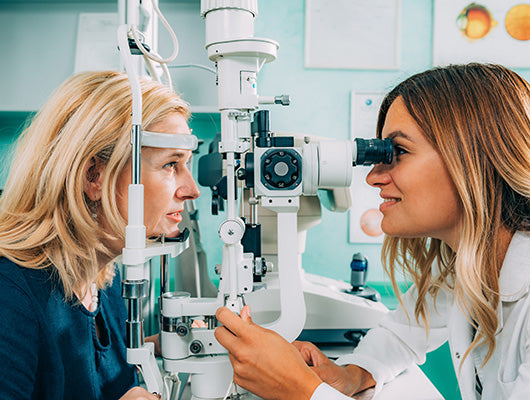
Slit lamp
This powerful microscope is used in a procedure known as slit lamp biomicroscopy. In short, the microscope’s bright light helps an optometrist examine the entire eye – including conjunctiva, cornea, iris, pupil and retina – for any signs of eye disease.
Tonometer
A tonometer is an instrument used to measure the fluid pressure of your eyes. The test is quick and painless, but very important for detecting glaucoma early.
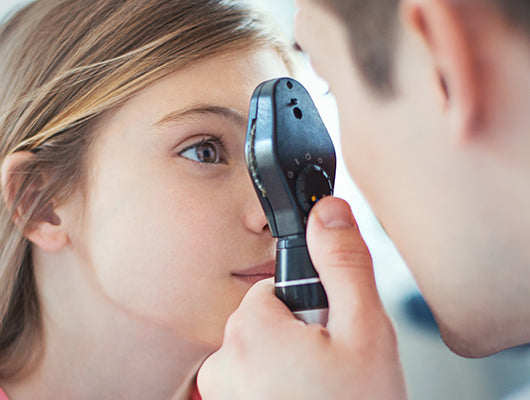
Ophthalmoscope (Fundoscope)
This commonly used instrument looks a bit like a small torch and comes with a bright light and strong, magnifying lenses. It helps your optometrist examine the health of your retina, optic nerve, macula and blood vessels are.
Some of these instruments might seem complex – and even look a little daunting – but none of the tests they’re used for in a routine eye exam are painful. That said, your optometrist or eye care professional will be happy to answer any questions or worries you might have.

We're here to help
If you have any questions or concerns speak to your optometrist or book your eye test here.
You might also like
View all-
Do I need an eye test?
Having regular eye tests can help identify and solve any vision problems, and they're a great way to get ahead of any underlying issues.
Eye testDo I need an eye test?
Having regular eye tests can help identify and solve any vision problems, and they're a great way to get ahead of any underlying issues.
Read more -
What should I expect during my eye test?
When you first have an eye test, your optometrist will get the lowdown on your eyes, vision, health and lifestyle in order to tailor the test to you.
Eye testWhat should I expect during my eye test?
When you first have an eye test, your optometrist will get the lowdown on your eyes, vision, health and lifestyle in order to tailor the test to you.
Read more -
Eye tests and out-of-pocket expenses
Worried about the costs of getting your eyes tested? We’ve got good news. They’re usually bulk-billed if you’re covered by Medicare.
Eye testEye tests and out-of-pocket expenses
Worried about the costs of getting your eyes tested? We’ve got good news. They’re usually bulk-billed if you’re covered by Medicare.
Read more




